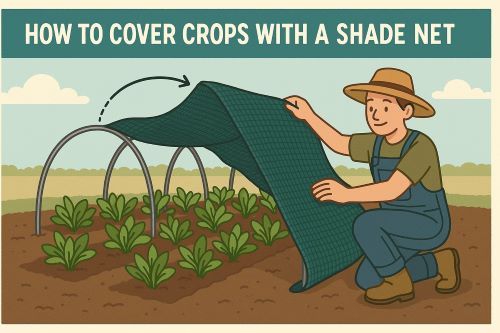


This blog explores whether green shade nets live up to their eco-friendly image.
A green shade net is a mesh covering made from polyethylene or similar synthetic materials, used primarily in agriculture and horticulture. These nets filter sunlight, reduce heat, and protect crops from wind, pests, and excessive radiation. Available in different densities—from 30% to 90% they allow growers to control the microclimate around their plants.
The construction of a green shade net may seem simple, but there’s more happening at a material level. Here’s a breakdown:
Some users combine different nets for a variety of crops. For example, fruit-bearing plants do best with 75% coverage, while delicate plants can benefit from a Garden Shade Net- Genuine 50% Shade in one area. The same farm might have a customized microclimate thanks to this multi-layered strategy.
Green shade nets are used in a wide range of agricultural and non-agricultural applications, including:
In India, small-scale farmers in Tamil Nadu and Telangana increasingly prefer affordable agricultural shade net options that are easy to install and durable enough to last multiple seasons.
The system that supports a green shade net typically includes:
How about installing shade nets for your crop or garden? Here’s how to begin:
Tip: For beginners, modular net house kits are available, primarily through e-commerce platforms selling green shade net online with installation guides.
Eco-friendliness doesn’t just depend on how a product works but how it’s made. Key considerations for green shade nets include:
For sustainable setups, ensure nets are installed securely to avoid flapping, tearing, or runoff problems during rain.
“Going green in farming is about more than color. It’s about making choices that protect the soil, save water, and support the future.”
Q1: Are green shade nets biodegradable?
A: Most are not. They’re made from synthetic polymers, but recyclable HDPE options are available.
Q2: Do shade nets reduce the need for pesticides?
A: Indirectly, yes. By reducing heat stress, crops become more resilient, and some nets deter flying pests.
Q3: Is a semi virgin shade net a good eco-friendly choice?
A: It’s more sustainable than single-use plastic since it uses recycled content, but it has a shorter lifespan than virgin alternatives.
Think about the purpose and substance of your shade net whether you are creating an environmentally friendly garden or trying to lessen the impact of your farm. Consider lifetime, recyclability, and long-term effects in addition to coverage. Sustainability is a developing habit rather than a one-time purchase.
